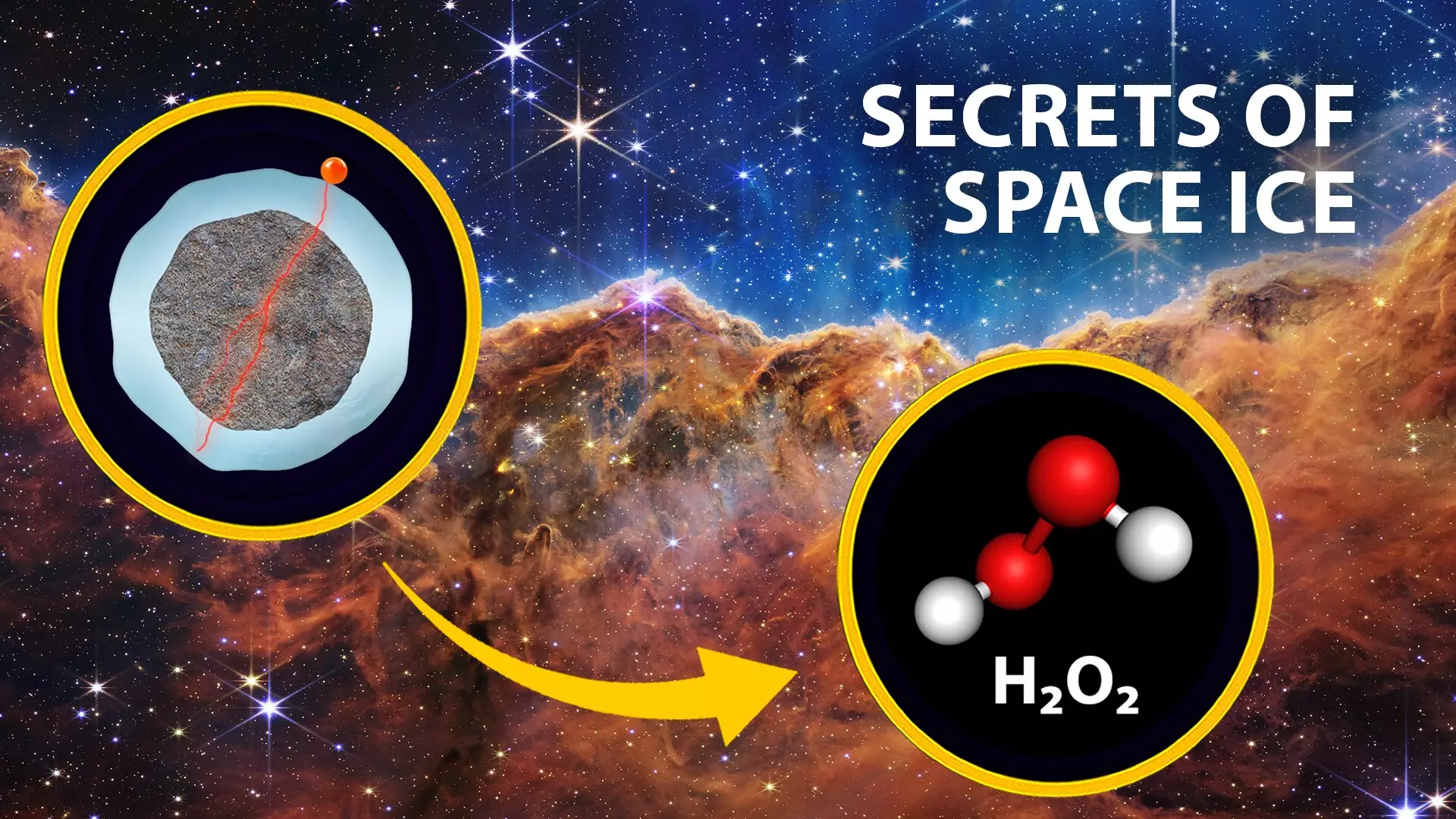Humanity has long pondered its place within the universe, grappling with profound questions about our origins and the essence of life itself. Inspired by the poetic lyrics of Crosby, Stills, Nash & Young, the notion that we are inherently “stardust” evokes a sense of wonder regarding the cosmic processes that birthed us. The mysteries surrounding our existence are deeply intertwined with the chemistry of the universe, particularly the mechanisms that lead to the formation of prebiotic molecules—the fundamental building blocks of life. Recent research efforts, particularly those spearheaded by a team of dedicated undergraduate students, seek to unravel these cosmic enigmas by investigating the impact of low-energy electrons produced by cosmic radiation on ice particles throughout the cosmos.
In a groundbreaking study led by Kennedy Barnes at Wellesley College, with mentorship from esteemed professors in chemistry and physics, the researchers aim to elucidate the comparative roles of low-energy electrons and photons in the synthesis of prebiotic molecules found in extraterrestrial environments. Their findings will be presented at the upcoming American Chemical Society (ACS) Fall Meeting 2024, drawing the attention of an audience eager to explore extraordinary scientific developments.
The genesis of this inquiry finds its roots in the pivotal contributions of pioneers like Annie Jump Cannon, whose early 20th-century discoveries sparked interest in the molecular constituents of space. Building upon such foundational work, Barnes and her colleagues delve into the evolutionary processes of these molecules, advancing our understanding of how they might emerge from cosmic conditions. Their central thesis posits that low-energy electrons play a far more instrumental role in the formation of prebiotic molecules than previously believed, suggesting a paradigm shift in the understanding of extraterrestrial chemistry.
While previous research acknowledged the catalytic capacities of both electrons and photons, Barnes’ investigations present compelling evidence that the abundance of cosmic-ray-induced electrons far exceeds that of incoming photons. This supports the notion that these electrons exert a dominant influence on the reactions that yield prebiotic compounds. A key aspect of the research reveals that the electrons can instigate reactions leading to the formation of complex organic molecules, essential for life as we know it.
Beyond celestial contexts, this research has potent implications for Earth-based applications, particularly in the fields of medicine and environmental science. Exploring the radiolysis of water, Barnes and her collaborators uncovered that electron-driven reactions could result in harmful byproducts such as hydrogen peroxide—an agent that poses risks both to stratospheric ozone and to cellular integrity. Her findings prompt a reevaluation of how we apply high-energy radiation in medical treatments for conditions like cancer, underscoring the intricate relationship between cosmic phenomena and terrestrial health implications.
To test their hypotheses, the research team employed an ultrahigh-vacuum chamber designed to replicate the unique conditions of space. By cooling a pure copper substrate to near absolute zero, they created a milieu that allowed for meticulous experimentation. Equipped with an electron gun and a plasma lamp, the scientists bombarded nanoscale ice films with low-energy electrons and photons, scrutinizing the resultant molecular reactions closely.
This meticulous approach ensured that their findings would not merely hinge on theoretical modeling but would also harness empirical evidence, enabling scientists to connect laboratory experiments with cosmic realities. As Barnes notes, their research holds profound implications not only for understanding the ice-rich environments, such as Jupiter’s moon Europa—a world with an intricate ice shell that may harbor life—but also for guiding future exploratory missions like NASA’s James Webb Space Telescope and the upcoming Europa Clipper mission.
The research team is committed to advancing their investigations by exploring variations in molecular composition and additional reactions instigated by low-energy electrons. Collaborating with experts from the Laboratory for the Study of Radiation and Matter in Astrophysics and Atmospheres, they aim to expand the horizons of their study to encompass a broader array of prebiotic chemistries.
As Barnes attests, the realms of astrobiology and cosmic chemistry are on the verge of significant breakthroughs. This exciting sense of discovery hints at a new Space Age, ripe with the potential to enrich our understanding of both the universe and ourselves. By demystifying the intricate dance between cosmic electrons and ice particles, future researchers may unlock the secrets of life’s origins in ways we have yet to imagine.
The intersection of cosmic chemistry and terrestrial science illuminates not just the mysteries of existence, but also the practical applications that resonate at home. As humanity continues its quest for knowledge, the bridges we build between the stars and our planet suggest a profound interconnection of all life’s narratives.

